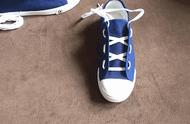UNIT 1
Unit 1: How can I get there?
一、重点词汇:
(一)、四会词汇:(要求听说读写)
1. 公共场所:
science museum(科学博物馆) post office (邮局) bookstore(书店) cinema(电影院) hospital(医院)
2. 指路词组:
turn left(左转弯) turn right(右转弯) go straight=walk straight(直走) crossing(十字路口)
(二)、其他词汇:(要求听说认读) 方位词:
next to(紧挨着„) near(在…附近) in front of (在…前面) behind(在…后面)
二、按要求写单词:
right(反义词) left / wrong(错的) near(反义词) far(远的) did (原形)do / does give(过去式) gave buy(同音词)by / bye where (同音词) wear穿着 there (同音词) their
三、重点句型:
(一). 四会句子:(要求听说读写)
1. 询问和回答地点方位:
--- Where is the museum shop? 博物馆的商店在哪? --- It’s near the door. 在大门附近。
2. 问路和指路:
--- How can we get there? 我们怎么到那? --- Turn left at the bookstore. 到书店左转。
(二). 其他句子:(要求听说认读)
Wu Yifan and Robin are looking at some robots. 吴亦凡和罗宾正在看一些机器人。
I wan to buy a postcard. 我想要去买一张明信片。
3. Excuse me, sir. 先生打扰一下。
4. What a great museum! 多么神奇的博物馆啊!
5. It’s next to the bookstore. 它紧挨着书店。
6. There is a pet hospital in my city. 在我们城市有一个宠物医院。
7. What an interesting film! 多么有趣的一部电影啊!
8. It’s next to the park on Dongfang street. 在东方街,它紧挨着公园。
9. Turn left at the bookstore. 在书店左转。
10. Wu Yifan’s grandpa gave Robin a new feature.
11. My new GPS works. 我的新的全球定位系统奏效了。
12. How many places did you pass by? 你们经过了多少个地点?
13. Chen Jie is trying to be a tour guide for Oliver. 陈洁给奥利弗当导游。

四、语法链接: (一)、重点语法:
1. Where is the museum shop?
此问句是由特殊疑问词where 引导的一个特殊疑问句, where意为“在哪里, 到哪里”, 用来询问地点, 放在句子的开头。
询问“某人或某物在哪里”的基本句型是:“ Where is/are 主语?”,
where is 后接名词或代词的单数形式, where are 后接名词或代词的复数形式。 回答时问题中的地点名词用it / they代替,句型结构为: 答:---It’s / They’re near the door.
句型结构: It’s / They’re 方位词 地点名词. 意为:“„„在哪里。” 注意:it’s = it is they’re = they are 表示地点的词:
museum博物馆, post office邮局, bookstore书店, cinema电影院, hospital医院 restaurant餐馆 bank银行 bus stop公交车站 lake湖 library图书馆zoo动物园 school学校 park公园 garden花园 hotel旅馆
2. It’s near the door.
此句中near是表示位置的介词, 意为“旁边,附近” , 其同义句是:It’s next to the door.它在门的旁边。
注意: near 与 next to 的区别
near 在……附近 (范围大,距离较远) next to 紧挨着„ (距离很近) 表示位置的短语:
next to the bookstore挨着书店 near the hospital在医院附近 near the post office在邮局附近 over there 在那边
on Dongfang Street在东方大街上 in front of the school在学校前面
3. How can we get there?
此句用来询问“怎样去某地”, 后面直接跟地点。 回答时, 可以用“ Turn left, turn right, go straight.”等句来回答。 例如:Turn left at the bookstore.
同义句:Where is the 地点?
4. Turn left at the bookstore. Then turn right at the hospital.
此句是指路的句型。 常用到的句型有:turn left, 向左转turn right, 向右转go straight直着走。同时表示在某处的介词用at.
5. Is the Thames far from here? No, it isn’t.
此句是个be动词开头的一般疑问句, 其回答要用Yes或No. 句中的far from意为“离……远”。反义词组为next to/near.
6. 感叹句句型:What a / an 形容词 名词!
例如:What a great museum! 多么神奇的博物馆啊!
What an interesting film! 多么有趣的一部电影啊!
(二)、其他
1. 介词at, on, in 的用法:
at 小地点 in 大地点、中间 on 街道、左右 例如: at Wanning / the crossing在万宁(相对于北京市是小地点) / 十字路口
in Beijing 在北京 in front of在……前面 in the middle of 在中间 on Dongfang street 在东方大街 on the left/right在左边、右边
2. want to, will的用法: want to (想要去做……)
例如:I want to buy a postcard. (√)
我想要买一张明信片。
I want to buying a postcard. (×)
will(将要) 动词原形
例如:I’ll / I will ask a policeman for help. (√)
我将向警察求助。
I’ll / I will asking a policeman for help. (×)
3. 动词 宾格
例如: Can you help her? (你能帮助她吗?her是宾格) Follow me, please! (请跟着我!me是宾格) 4. 主语是第三人单数时,动词后面要加s或es:
My new GPS works. (我的新的全球定位系统奏效了。works 是work的第三人称单数)















